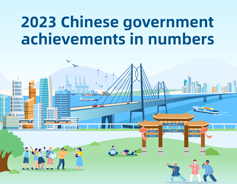Official suggests building Beibu Gulf modern agriculture cluster
- (chinadaily.com.cn)
- Updated: 2020-11-27
The construction of a modern agriculture cluster in the Beifu Gulf was discussed at the 11th meeting of the Beibu Gulf Organization for Economic Cooperation and the third meeting of the Beibu Gulf Organization for City Cooperation, which were held in Maoming from Nov 21 to 23.
Jointly building a modern agriculture industrial cluster in the Beibu Gulf city cluster is of great importance in expanding domestic demands and advancing the country's "dual circulation" growth pattern, said Zhang Yanqing, vice president of the Academy of Agricultural Planning and Engineering under the Ministry of Agriculture and Rural Affairs.
Guangdong province, Guangxi Zhuang autonomous region, and Hainan province have good development conditions for agriculture, Zhang added.
They all possess tropical or subtropical monsoon climates, and are rich in biodiversity, fertile land, and water resources. Coupled with their long history of agricultural development, they are conducive to the formation of an agriculture industrial cluster with a significant scale.
"The production and marketing of agricultural products in the Beibu Gulf region are currently more closely linked. The cities in western Guangdong and Hainan have established an interactive mechanism to assist the production and sales of winter vegetables," said Zhang.
Every year, Guangxi sells more than one million metric tons of high-quality rice to the Guangdong-Hong Kong-Macao Greater Bay Area. In the first half of the year, Guangdong purchased more than 9 billion yuan ($1.37 billion) of agricultural products from impoverished areas in Guangxi, accounting for more than 77 percent of Guangxi's total sales.
The three places have been jointly promoting the construction of Nanfan Science and Technology City in Hainan. Capital from Guangdong has helped the development of the whole agriculture industrial chain and the rural tourism project in Guangxi and Hainan, reaching good regional agricultural cooperation.
The "dual circulation" growth pattern refers to a strategy in which the domestic market will play a leading role, while international and domestic markets reinforce each other.


